| Report Type | Full |
| Peak(s) |
Kilimanjaro 19,340 ft Mt Meru 14,980ft |
| Date Posted | 09/28/2023 |
| Date Climbed | 09/06/2023 |
| Author | kiwiliam |
| I recommend climbing Kilimanjaro via the Western Breach, and do it with Team Kilimanjaro |
|---|
|
A quick summary for those of you who don’t want to read
Why The Western Breach
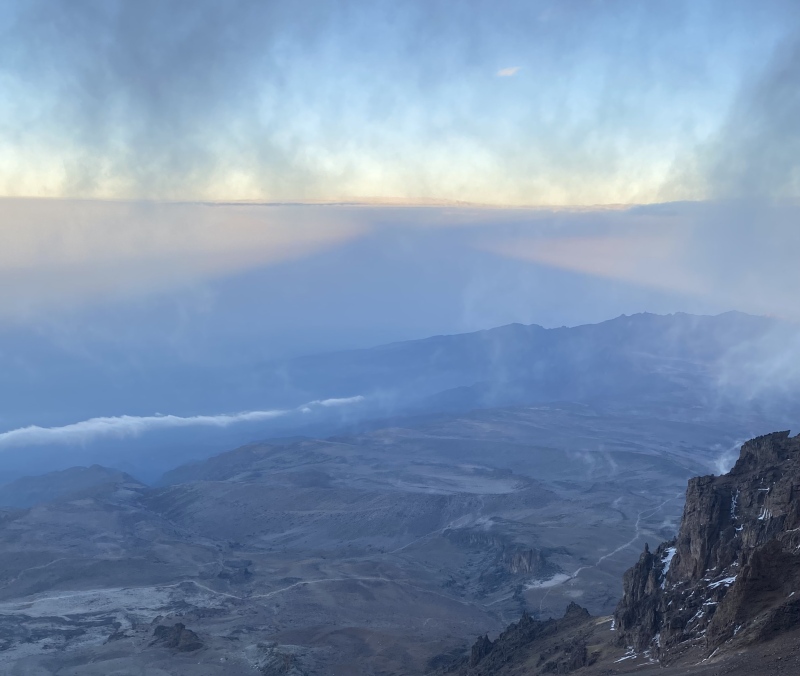
Why Team Kilimanjaro

Other Observations
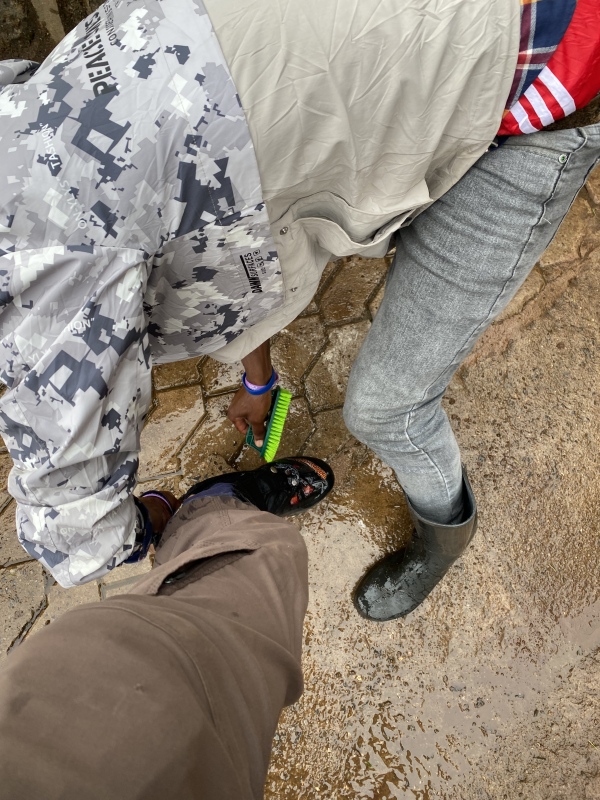
The Full Story 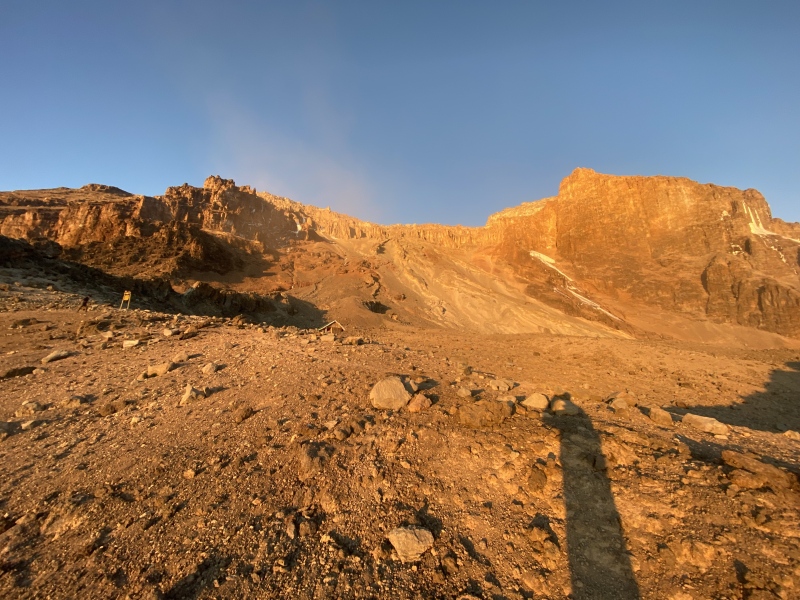
The Western Breach
I was strangely ambivalent the opportunity to climb Kilimanjaro presented itself. After starting on Longs Peak, my 14ers journey quickly focused on Class 3 scrambles, and the fact both wife’s sisters had done Kili, suggested it was really just a high altitude walk up, which didn’t really appeal. But then again climbing Huayna Potosi 6,088m/19974ft in Bolivia 25 years ago was the hardest thing I had ever done, so the specter of an adding 5,000ft above my 14,000 foot comfort level, hung over me. Then I discovered the Western Breach, the most challenging of the tree summit assault routes up the mountain. (There is actually a fourth route accessing the summit from the North, but this was only offered by one company.) Kilimanjaro has an awesome symmetry to it. It is huge. When we were driving to the mountain and the guide pointed out the top was visible through a break in the clouds, I initially failed to look high enough in the sky to spot the summit. But up close that symmetry is kind of mundane, at every turn another ridge leading up to the snow-capped crater in the same smooth curve. The Western Breach breaks that profile: Bound by cliffs to the north and south and topped by cliff bands that spill straight out of the floor of the crater it is the most spectacular face of the mountain. It is also the most hazardous route to the top. So much so that it is not commonly listed as a route at all. There have been many accidents on the Breach, but the January 2006 rock fall that killed 3 Americans is the one everyone focuses on. It resulted in re-routing the trail to minimize the time spent in the rockfall death zone. Even so most pages dedicated to the Western Breach seem positioned to discourage people from attempting it (Click here and here). I can understand. The Breach is not a place for the average Kili aspirant: 19,340 ft is plenty of challenge for most. But anyone deep into 14ers should consider it. Objectively the risk of rock fall is higher on the Breach. Is it any greater than climbing in the Elks? I don’t know, but it is about understanding an accepting the risks. This is where Team Kilimanjaro entered my calculation. John Rees-Evans and Joseph Paul Nchereri the founders of Team Kilimanjaro were prominent in analyzing the cause of the 2006 accident and recommending changes to the route (Accident Report). They made sure I knew what I was doing before agreeing to take me up that way. Full disclosure. After hearing three rock falls in the Breach in the two days we were acclimatizing at the bottom, I stood with one of my climbing companions, more a marathoner than a mountain hiker, and discussed his concerns. This started with the observation that mountains tend to erode in chunks, rather than as individual grains of sand being knocked off one at a time. The huge cliff to the south, where we had seen a rock fall earlier, was an example of that principle and the reason we had not visited the Arrow Glacier which would have required crossing the runout gully at the base of this cliff. We were able to see the r-shaped glacier that had released the 2006 rock fall and follow the fall line to where it had crossed the old route up the face. My companion was relieved to see the new route up the Stone Train spur to a natural break in the cliff bands at 17,500 feet had a much smaller catchment above it than the zones we had seen rocks tumbling down. Team Kilimanjaro’s site highlighted another danger with the Western Breach, namely that once you are 500ft (150m) below the lip of the crater evacuation down the Breach is judged to be more risky than continuing up, and crossing the crater floor to Stella Point before starting a descent. This is obviously not ideal if you are suffering altitude sickness, but we were assessed over a cup of tea before passing the point of no return. 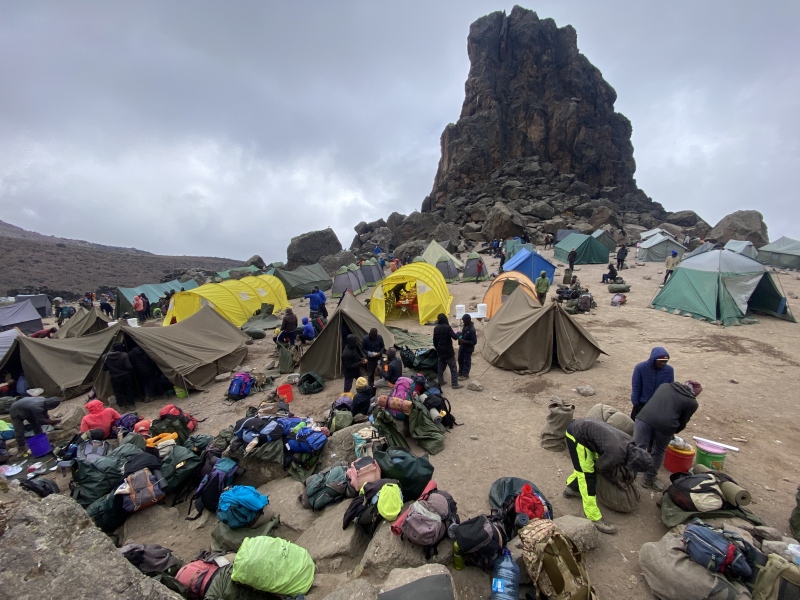
The Western Breach is accessed from Lava Tower (15,100 ft), which is a lunch stop on Day 3 for groups doing the southern circuit of the mountain from Machame or Lemosho Gates. Lave Tower will be packed when you arrive, but if you do the Western Breach you will soon have the place to yourself as your porters set up camp and everyone else descends to Barranco Camp (12,800 ft). Day 4 will be a short hike up to Arrow Glacier Camp (15,900 ft) while those on the standard routes doing a 6-day climb will spend the night at Barafu camp (15,300ft). When we started our Summit Assault at 2:45am on Day 5. We had spent 15 hours above 15,900ft and almost 38 hours above 15,000 feet since arriving at Lava Tower. Those aiming to meet us at the summit had probably spent about 12 hours above 15,000 feet, and had walked an additional 6 miles to get to their starting point. We were better acclimatized and well rested. I can’t separate out all the reasons, but the altitude did not bother me. Perhaps in the Andes I paid for my youthful confidence and “she’ll be right” Kiwi attitude. I’m sure the Diamox helped, but I was better acclimatized and rested, and the guides did a create job keeping you fed and watered. Plus, there was no hurry. At times the Kili mantra of “pole, pole” Swahili for “slowly, slowly” was annoying. Julius our lead guide had mastered the art of walking like a turtle, so much so that I almost fell backwards a couple of times trying not to bump into him. But this approach meant I was seldom stooped over my hiking poles heaving for breath as I am prone to do when pushing up 14ers with half an eye on avoiding an afternoon thunderstorm. That said one of our group did suffer from the altitude/a head cold, so we ended up abandoning the idea of camping in the Crater. Planning for a night in the crater was another reason I opted for Team Kilimanjaro. They would have us Summit and then descend to the Crater camp. Other outfits offering the crater camp defaulted to summiting the next morning before descending. This seemed like such an obvious violation of climb high and sleep low, that if made me question their whole operation. The other thing I liked about Team Kilimanjaro was the tent was big and spacious. I was able to stoop in and out of the vestibule rather than having to crawl into it. I saw other companies securing tents with wooden stakes. TK was not the cheapest local option, but it seems you get what you pay for. My only concern was the TK sleeping bag might not have handled a night in the Crater. It turns out they actually stuff their own bags but cleaning them after each trip reduces the loft so it is a constant battle to keep them functioning. I suggested a special set of sleeping bags for people wanting to camp in the crater might be a solution. You could take your own sleeping bag, but understand if you fly anywhere of a Cessena 208, the default Safari airstrip plane, you will be restricted to a small bag (I had a 45L Patagonia duffel), that can fit through the cargo hold door, and you probably won’t want to fill a 1/3 of it with a three season sleeping bag. Mt Meru
Meru is Kili's little brother, 40 miles to the west. It looms over the city of Arusha, which is a perfect base for exploring northern Tanzania. Climbing it seemed a much better way to acclimatize than spending the same amount of time working your way around Kilimanjaro Meru (14,980ft) is a larger version of Mt St Helens. Within its crater is an ash cone and a remarkably lush rainforest: it literally seems to make its own weather. You will see more wildlife on Meru, but also you need a ranger with a rifle to protect you from the onery buffaloes. We didn’t see any, but we certainly saw plenty of buffalo poo and a hyena track in the mud. Climbing Meru involves staying in huts, which is good as rained heavily on the first night. We did it a 3day/2night trip which required descending the whole mountain after summiting on the third morning. We were thankful for the rest day the following day and for the “ambulance” ride down from the first hut, which saved our tired legs another 2-3 hours walking. This was courtesy of the park ranger, and another reason to carry some low denomination bills. It added an extra day or two to the whole itinerary but I would thoroughly recommend it in its own right, let alone as an acclimatization hike for Kili. 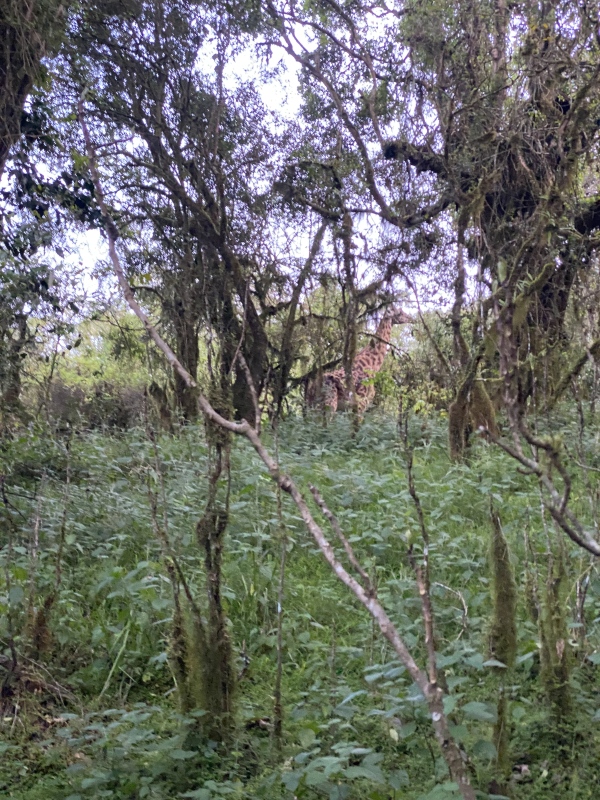
Three points about Meru.
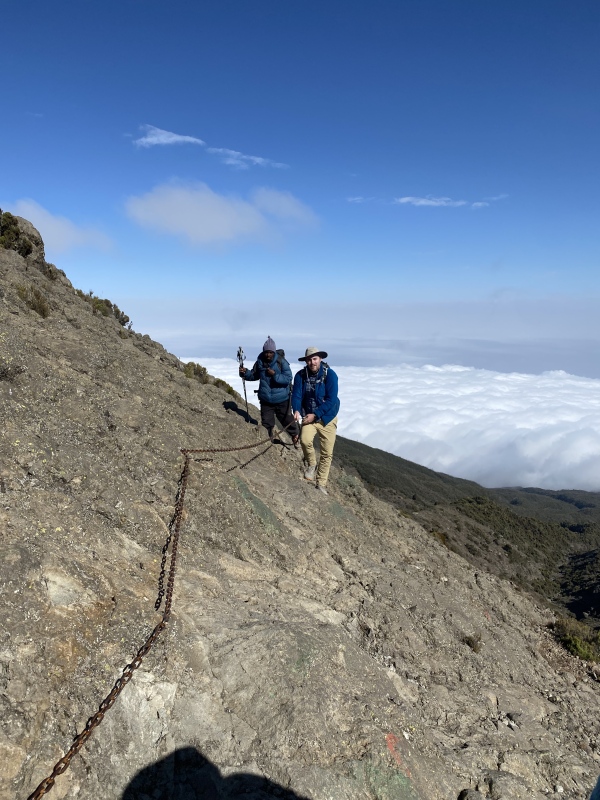
Trash and Shit
I am not a particularly neat freak, but the amount of trash, especially at the camp sites really detracted from the experience. Even on the Western Breach there was trash, including the most random item, a hacksaw blade, at 17,000 feet. I’ve been trying to understand why more people don’t mention this. Is it because, for many the experience and achievement are so great it causes the trash to pale in comparison or as time passes the good memories our weigh the bad? Tanzania has managed to ban single use plastic bags, and the porters had to separate out organic waste when we exited the park, so this is not a black and white issue. But the Tanzanian National Park Service needs to handle this better, lest it kill their golden goose. If any 14er was covered in this much trash I'd bet even the most "freedom loving, don’t tell me what to do" users of this site would be drawing a line. We hired a green porter to clean up the mountain as we went. I could have hired 6 and they might have made a dent in the problem. Even then the Green Porters balked at one subset of the trash: Human waste. There seemed to be plenty of toilets, but they are not cleaned regularly and they were all squatters which are not as well designed for containing explosive diarrhea as a bowl toilet. This compounded the cleanliness issue. 
At camp we had a toilet tent which was emptied into the squat toilets. That said, please take a couple of WAG bags with you. Given you are encountering a whole new gut microbiome, the chances you will need to go between regular toilet stops is a little higher, and on summit day with its alpine start you will probably be out of camp before your body wakes up. We approached the Uhuru summit from the opposite direction to the main trail. One of our party was lagging, so I waited about half an hour for him, to ensure we could all summit together. I spent that time kicking sand over all the shit left by people who had summited from the main trail and thought it would be ok to pop down the far side and take a dump. 
Photo Diary 

Meru Day 2: Started in the rain at Miriakamba Hut, before climbing through an inversion and entering the sunshine just below the Saddle Hut. 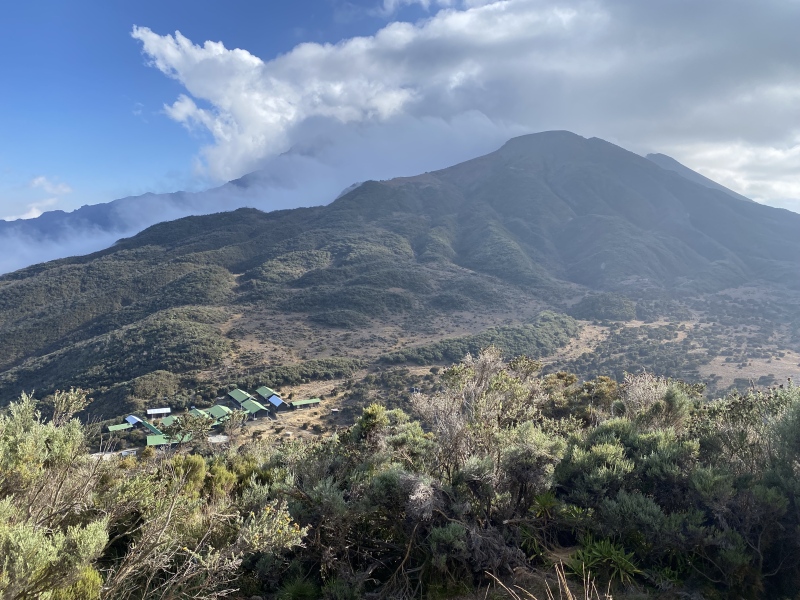
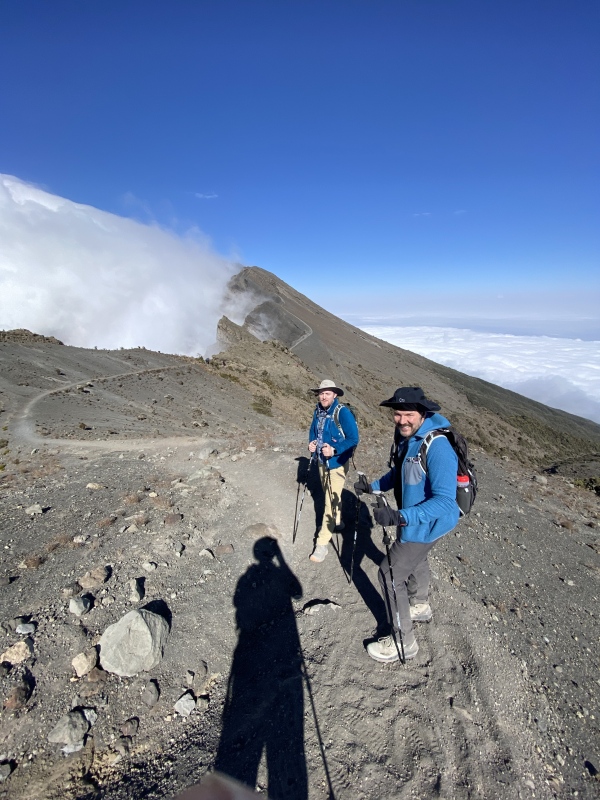
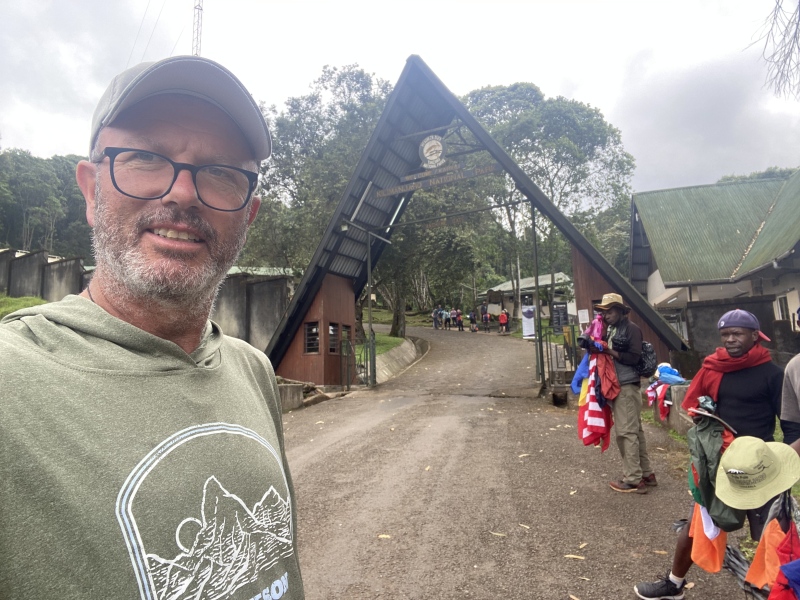
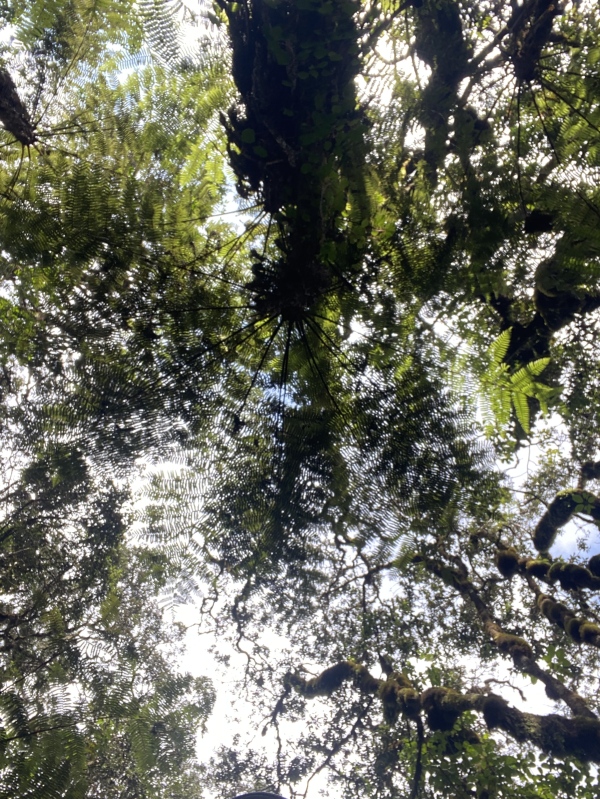
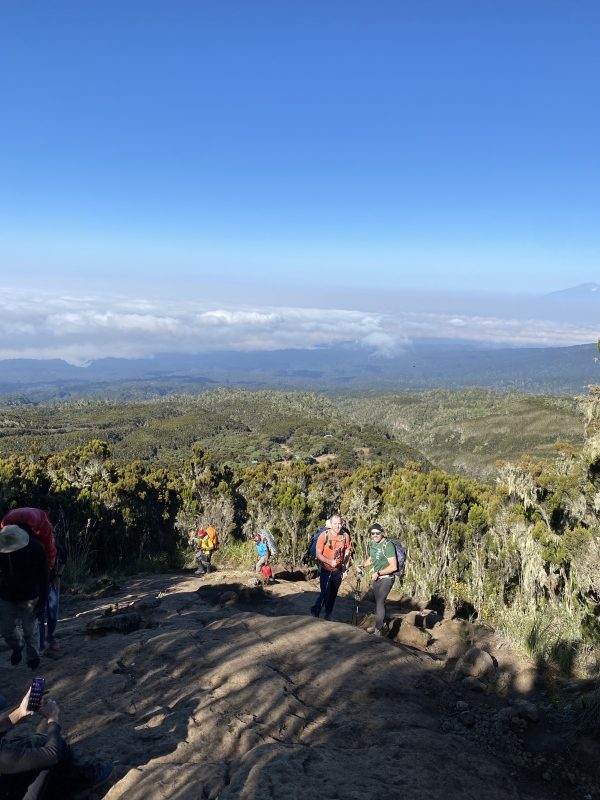
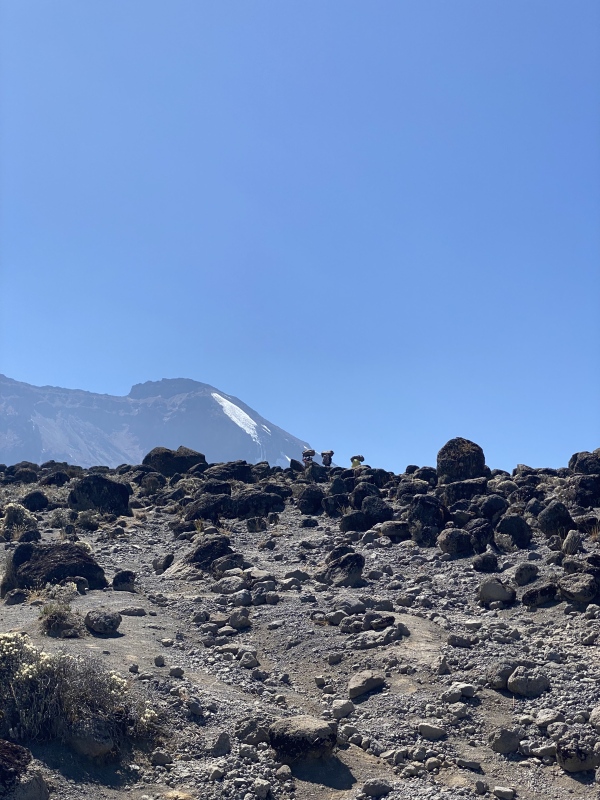
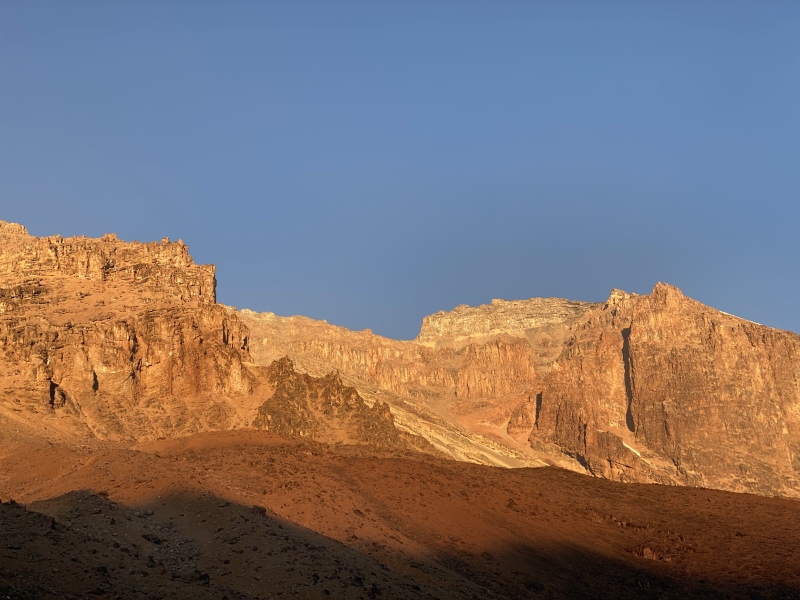
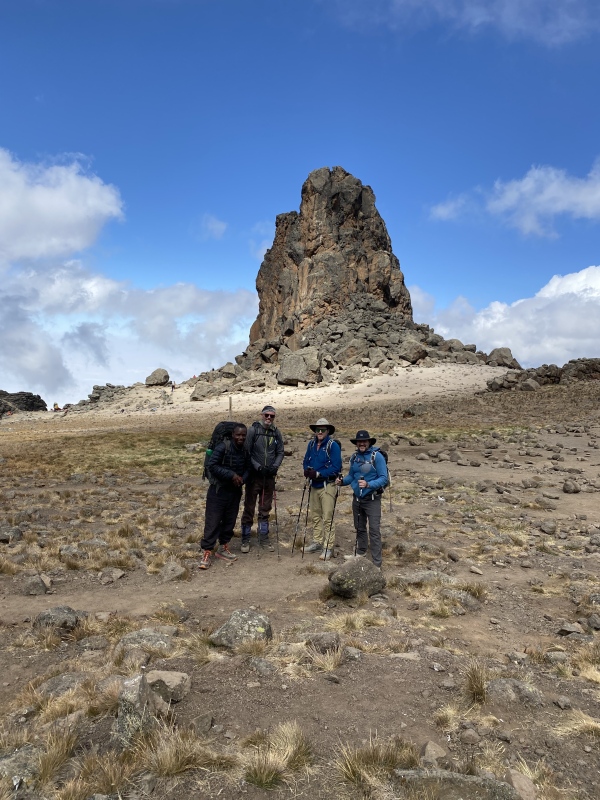

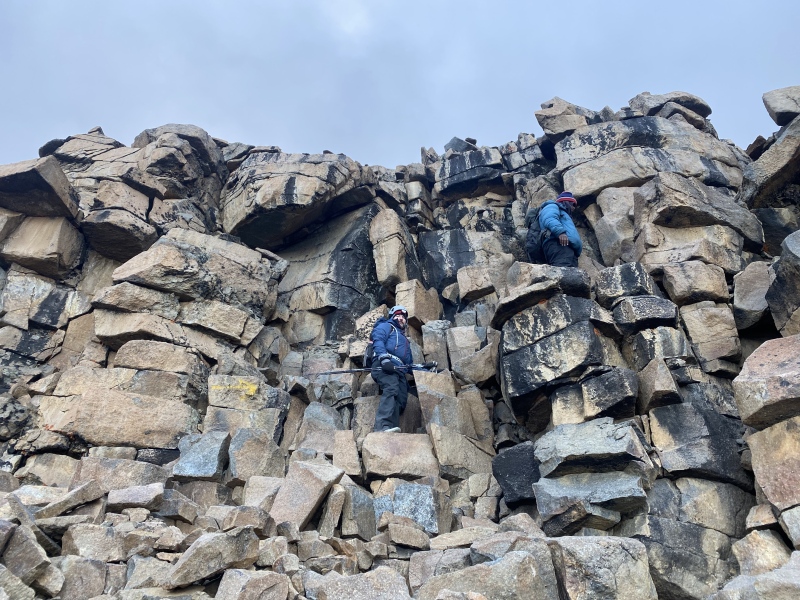
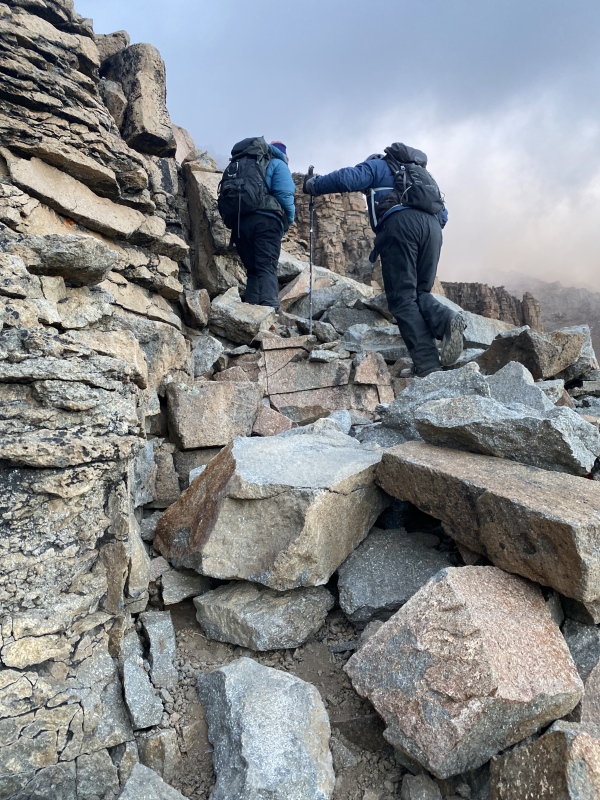
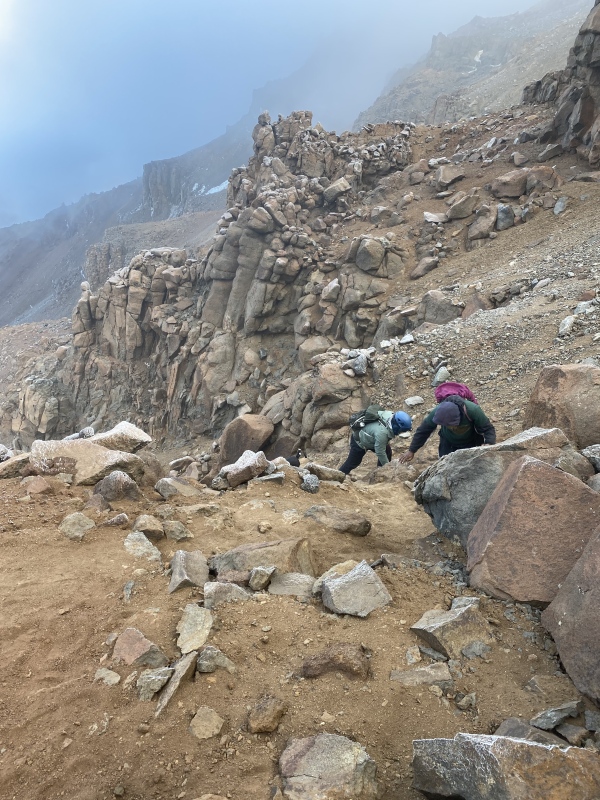 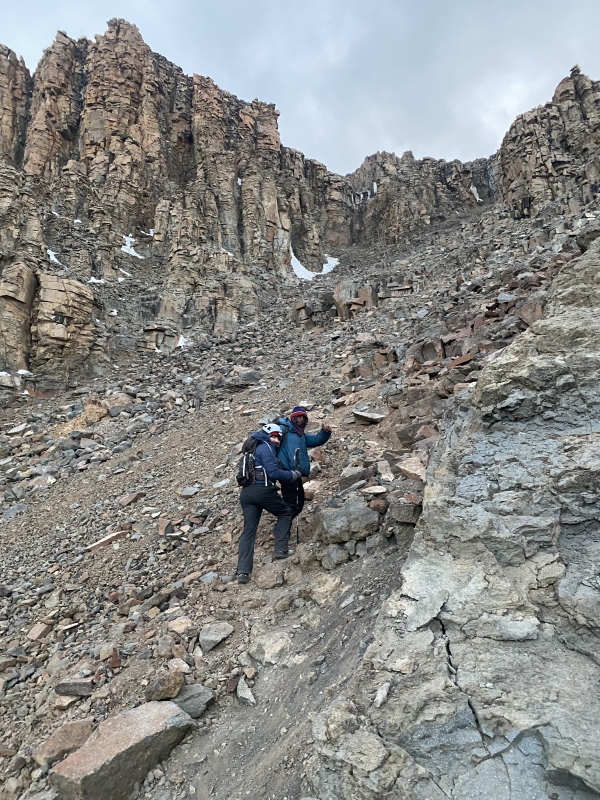
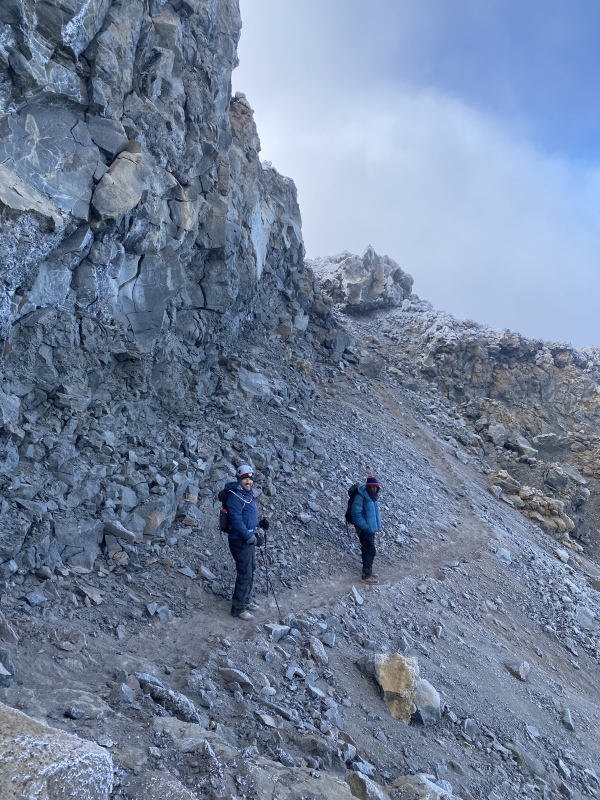
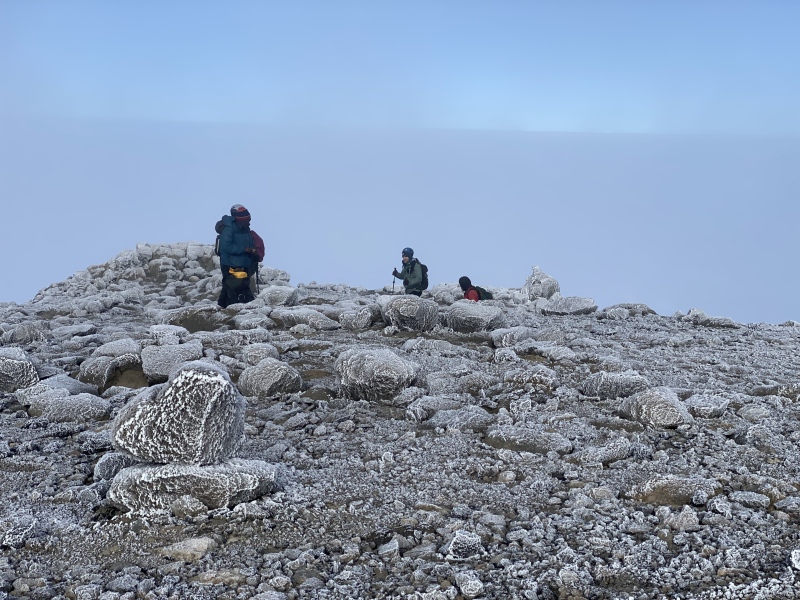
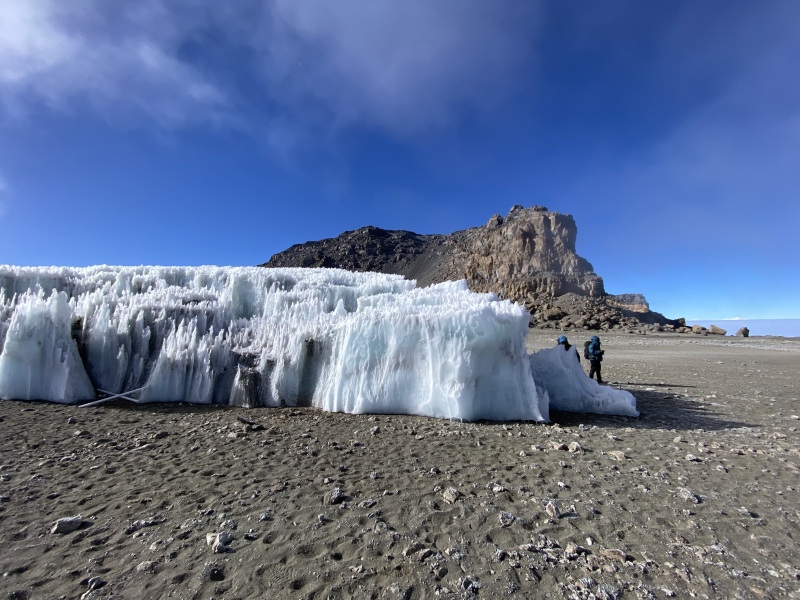


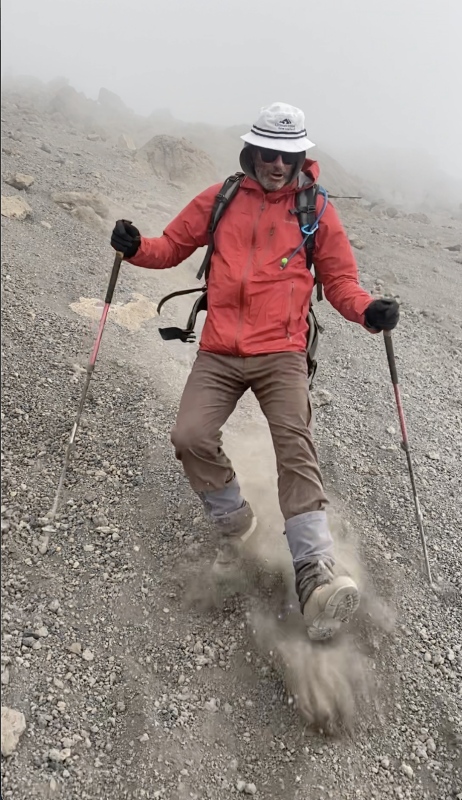

|
| Comments or Questions |
|---|
|
|
Caution: The information contained in this report may not be accurate and should not be the only resource used in preparation for your climb. Failure to have the necessary experience, physical conditioning, supplies or equipment can result in injury or death. 14ers.com and the author(s) of this report provide no warranties, either express or implied, that the information provided is accurate or reliable. By using the information provided, you agree to indemnify and hold harmless 14ers.com and the report author(s) with respect to any claims and demands against them, including any attorney fees and expenses. Please read the 14ers.com Safety and Disclaimer pages for more information.
Please respect private property: 14ers.com supports the rights of private landowners to determine how and by whom their land will be used. In Colorado, it is your responsibility to determine if land is private and to obtain the appropriate permission before entering the property.
